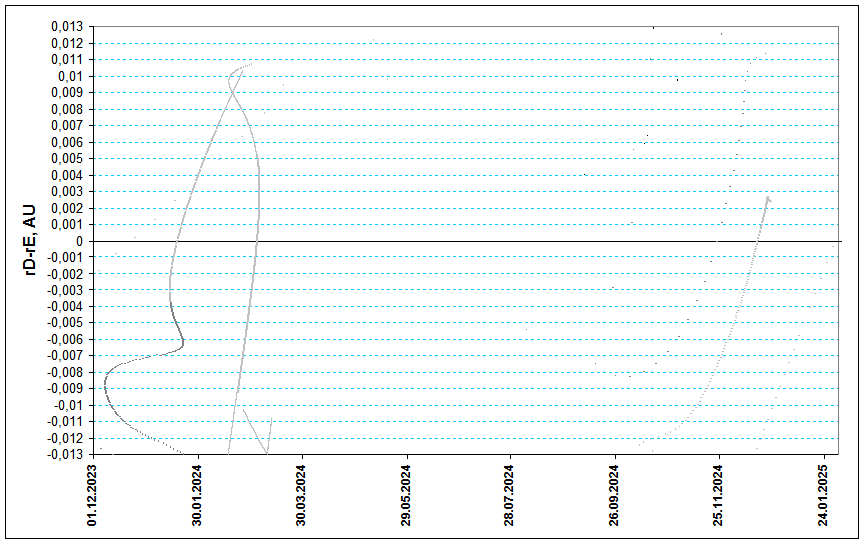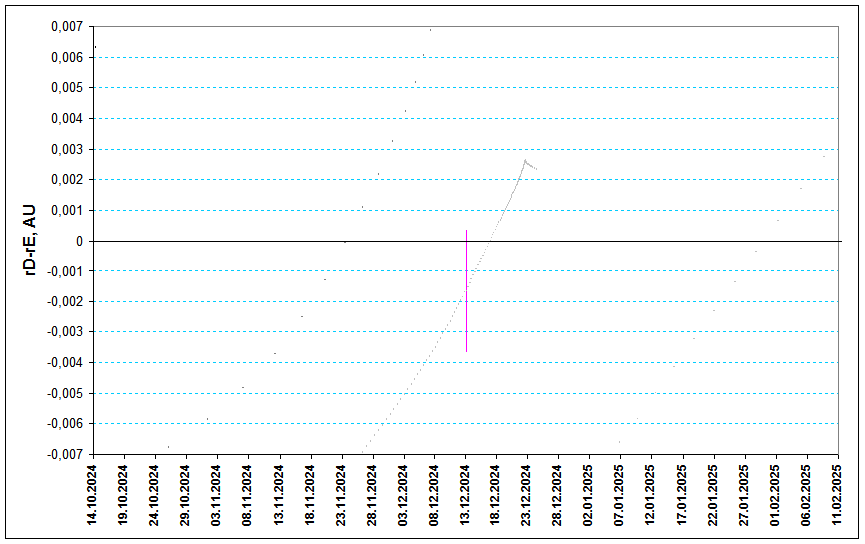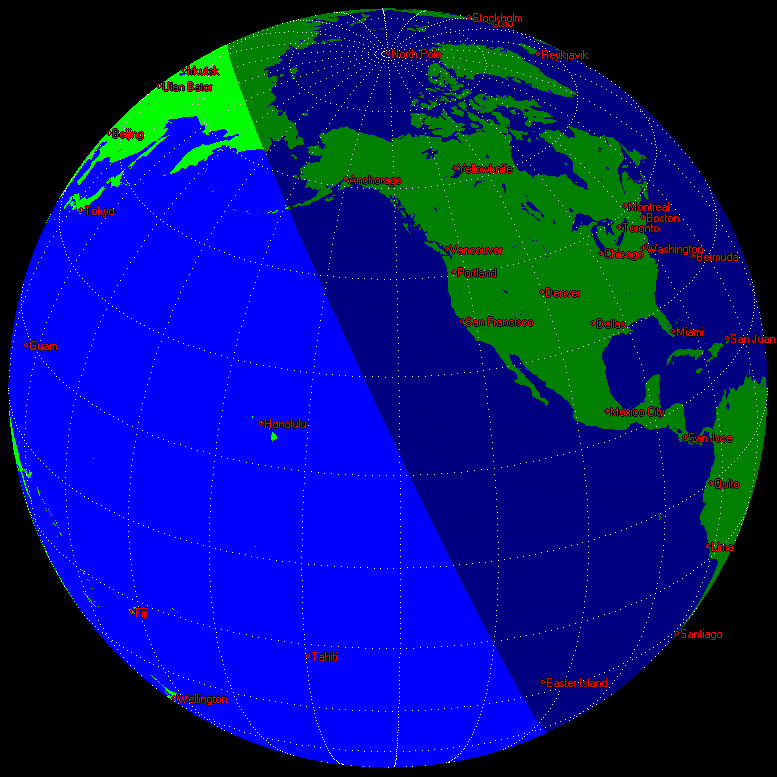46P-ids 2024: prediction of activity
to the list of predictions

Fig. 1. Space-temporal projection of 46P-ids trails parts onto their minimal distance passages in 2024 (correspondence between colours of the particles and their ejection velocities can be seen here).

Fig. 2. Detailed space-temporal projection of 1974 trail parts onto their minimal distance passages in 2024 (correspondence between colours of the particles and their ejection velocities can be seen here).
In 2024 the Earth is expected to pass close to the 1974 trail of the comet 46P. The computed time of maximum is 2:21 UT on December 13 with the radiant RA=340.9°, Dec=+28.3°. Distance to the trail is 0.00165 AU, trail density is 54.6% of that for a 1 revolution Leonids trail, ejection velocity is 59.12 m/s. These parameters are in general more favorable than those for 2023 encounters and considering quite large size of the comet 46P, there are good chances for some low but detectable activity with mainly faint meteors though. Unfortunately this encounter is expected to occur under almost full Moon so bright moonlight will create additional problems for observations. However even despite this observations are highly recommented as meteor activity of the comet 46P stream has not ever been observed.

Fig. 3. The Earth as seen from coming 46P-ids meteors (RA=340.9°, Dec=+28.3°) during the expected maximum time of outburst from 1974 trail at 2:21 UT 13 December.
In case the activity takes place at the predicted time, it could be observed mostly in Northern and Centras Americas excluding perhaps Alaska.
References
1. "Comet's dust 2.0" program by S. Shanov and S. Dubrovsky. [Used for orbital computations.]
2. E. Lyytinen, T. van Flandern "Predicting the strength of Leonid outbursts", 1998, Earth, Moon, and Planets, P. 149-166.
3. Jenniskens P. Meteor showers and their parent comets, 2006, 780 p. 4. Kasuo Kinoshita, http://jcometobs.web.fc2.com/ [Orbital elements of the comet 46P/Wirtanen]
5. Hewgill G. Xearth 1.1.0 (Software program), 2003.
References
1. "Comet's dust 2.0" program by S. Shanov and S. Dubrovsky. [Used for orbital computations.]
2. E. Lyytinen, T. van Flandern "Predicting the strength of Leonid outbursts", 1998, Earth, Moon, and Planets, P. 149-166.
3. Jenniskens P. Meteor showers and their parent comets, 2006, 780 p. 4. Kasuo Kinoshita, http://jcometobs.web.fc2.com/ [Orbital elements of the comet 46P/Wirtanen]
5. Hewgill G. Xearth 1.1.0 (Software program), 2003.